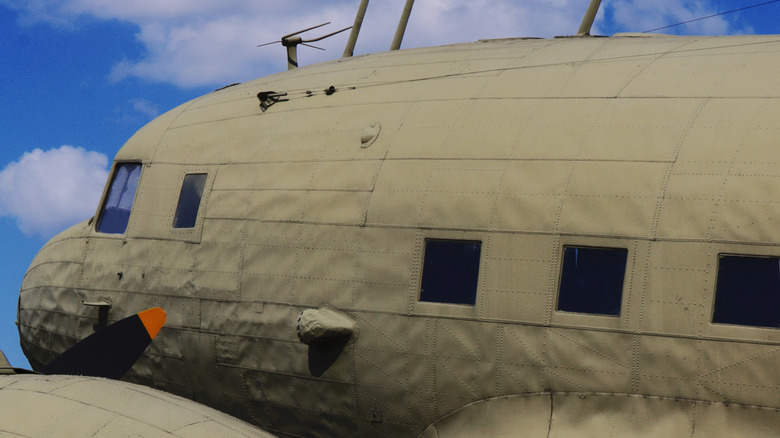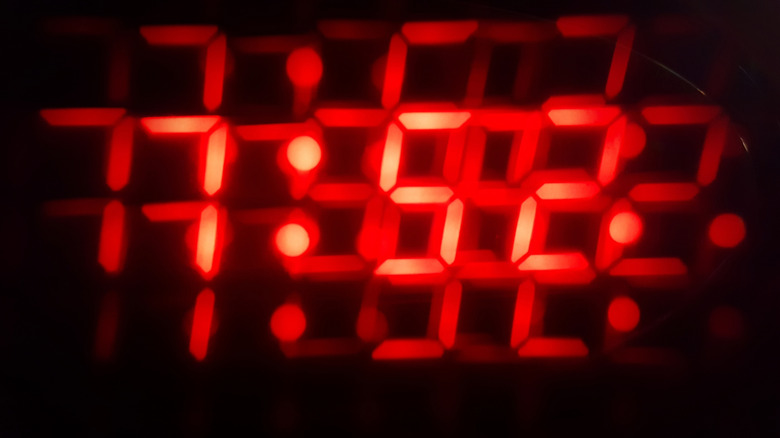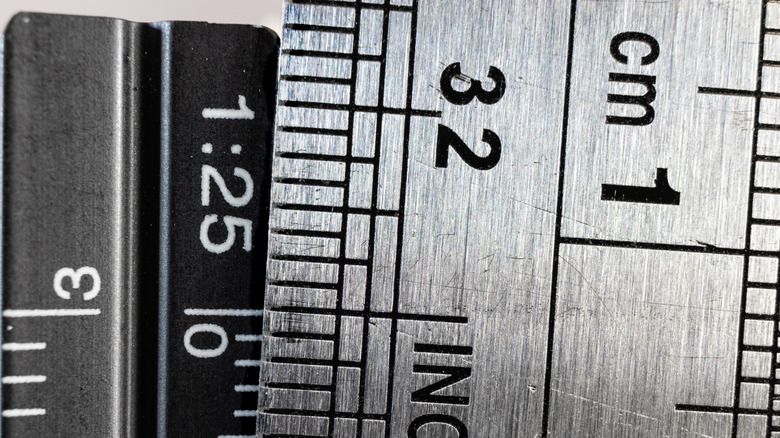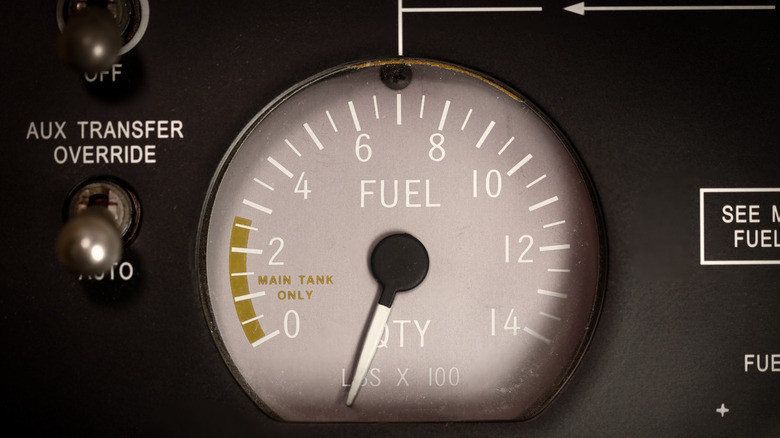9 Worst Math Blunders Of All Time
When you sat in your high school math class, and your teacher told you how important the subject was in everyday life, did you believe them? As adults, we realize that we actually use math every single day — when paying for goods, baking, or doing our taxes — and errors can have unfortunate consequences.
Making mistakes in your own day-to-day math is one thing, but when lives or company livelihoods depend on your math abilities, you'd better make sure you get it right. Sometimes the littlest numerical differences can snowball into enormous mathematical discrepancies, which can sink a warship, result in a missile strike, or lead to the disappearance of a ridiculously expensive Mars orbiter.
There have been many math hiccups over the years that have caused chaos, and a surprising number of them were due to the simple misplacement of a decimal point. Let's take a look at nine of the worst math blunders of all time.
90-degree angles caused two planes to disintegrate
Air travel has advanced dramatically in the last half a century, and around 100,000 flights take to the skies every single day. Airplane safety is, of course, paramount, and the chances of something going wrong with a modern day airliner is incredibly slim. In 1954, however, two airplanes broke up midair within a few months of each other, all because of an issue with the math.
The de Havilland Comet was a revelation when it was launched in 1952, allowing passengers to jet across the world at speed and in comfort. However, tragedy struck in January 1954, when a craft broke up in the air, resulting in 35 people on board losing their lives. A few months later, a similar incident where 21 people died meant the Comet was no longer considered safe. After much investigation into the two crashes, it was discovered that 90-degree angles were to blame.
In these early aircraft, the windows were square, which is fine for objects on the ground, such as your house, but not so good for pressurized cabins 30,000 feet in the air. The sharp corners at the windows caused an increase in stress which fatigued the metal, which eventually cracked, and caused the disastrous disintegration of the plane. Fortunately, the fix for future aircraft was relatively simple — using windows with rounded corners instead of right angles reduced the stress on those points significantly, leading to much safer air travel from that point onward.
A Mars orbiter was lost after the wrong units were used
If you've ever struggled to convert from imperial to metric, you are not alone, and doing so incorrectly can have unfortunate consequences. Especially if you worked for NASA in the late 1990s, and the error in conversion led to the loss of a £78 million orbiter.
In 1999, the Mars Climate orbiter that was sent to examine the temperature and atmosphere on the planet disappeared as soon as it reached its destination. Despite having successfully traveled the 416 million mile journey to the red planet, it lost its way at the last hurdle, and likely broke apart as it entered the atmosphere, on the first day of what should have been a year-long project.
The issue, as red-faced NASA representatives had to admit, came from a miscalculation when data was used in the unit pounds of force rather than the SI unit of Newtons. Since 1 pound is equivalent to 4.448 newtons, this mismatch eventually led to the disastrous miscalculation that Patrick Moore described as "the worst space gaffe since the Hubble telescope" (via The Free Library). The expensive lesson for NASA was that if you are going to have scientists use the metric system in a country where everyone still uses imperial, you'd better make sure you check all your units before sending a tenth-of-a-billion dollar spacecraft on its way.
A mistimed clock led to a missile attack that killed 28 soldiers
If your smart watch or phone clock is slightly out of sync, you may have been frustrated when it led to you missing a bus, but at least it didn't fail to detect a missile attack that led to the deaths of 28 people. In 1991, during the first Gulf War, a U.S. Patriot missile system failed to prevent a missile attack, due the timing on the clock being off by fractions of a second.
The fatal error occured as a result of the clock rounding up time to 1/10 of a second, which, while a tiny difference, accumulated into a much more significant gap over time. Although the difference was only 0.000000095 seconds each time, by the time the missile struck, the difference had increased to 0.34 seconds behind. Since the scud missile in question could cover half a kilometer in this short time, it resulted in a catastrophic miscalculation of the missile's position, and 28 soldiers were killed as a result.
Mismatched rulers caused one of the most spectacular warships ever built to sink after 20 minutes
If you are going to launch a ship that has been hailed as one of the "most spectacular warships ever built," you'd better make sure that its maiden voyage is spectacular. In most people's view, sinking after 20 minutes wouldn't really qualify.
In 1628, the mighty warship Vasa set sail in front of excited onlookers, only to be hit by strong winds and sink as the horrified audience watched. It was to be one of the best warships in the world, adorned with 64 bronze cannons, which were of no use to anyone once they settled at the bottom of the sea. The issue, it transpired, came down to mismatching rulers.
Unbelievably, the workers building the ship were using different sizes of rulers. One used the Swedish foot, which is divided into the same 12 inches we use now, whereas the others used the Amsterdam foot, which only contained 11 inches in the same length. This meant if a piece of wood was to be measured to 3 inches, it would not be the same as the equivalent piece cut using a Swedish ruler. The result was a ship that was lopsided and top heavy — those fancy bronze cannons wouldn't have helped — and never stood a chance once it left the port.
Miscalculated sea levels led to a bridge not meeting in the middle
If you are building an inter-country bridge across a river, surely the best way to construct it is for both sides to build their part, and meet in the middle. Well, yes that may be the ideal option, until you discover that one side is half a meter lower than the other.
If you thought this happened centuries ago, before standard measurements were commonplace, sadly not. This mathematical gaffe happened in 2003, during construction of a bridge between Switzerland and Germany, over the Rhine River. So how on earth could such a mistake occur with the technology we have nowadays? It happened, not due to an error with the physical measurement of the bridge itself, but from the understanding of the term "sea level."
The Germans assumed sea level to be based on the North Sea, whereas the Swiss took it from the Mediterranean. This misunderstanding meant that calculations between the two countries were misaligned before they even began, and it wasn't until construction was in full swing that the discrepancy was noticed. The initial difference of about 10.5 inches was actually spotted, but some dodgy math meant that the final difference ended up doubling, rather than reducing to zero as planned. Lesson learned: If you are trying to calculate how far something is above sea level, make sure you know which sea.
Movement of a decimal point resulted in a city council overpaying by almost 200 million euros
Learning how to deal with decimal points is a difficult concept for many people as they learn math, and that struggle can continue into adulthood, as we come across decimals in our everyday lives. We've all filled in a payment field without a decimal point before, and hopefully noticed before sending a family member $1000 instead of the $10 you owed them for lunch. In 2014, however, the Amsterdam city council made a decimal error of gigantic proportions, by paying out 188 million euros in housing benefit inside of the planned 1.8 million.
The mathematical error was down to a simple mistake — figures being in cents rather than euros. Somehow, the 100-fold error managed to get through all of the systems, and out into customers' bank accounts, where the biggest overpayment was 34,000 euros. Amazingly, almost 99% of the overpayments have been returned to the council by recipients, though it did cost them 300,000 euros to try and recover from their mistake.
An engineering miscalculation caused 114 deaths
To most of us, having two short poles instead of the same length of a long one would seem equivalent. If you are a structural engineer, however, this is definitely not the case, and failing to understand this could have disastrous consequences. If someone had mentioned the math used by civil engineers to those in charge of building the Hyatt Regency in Kansas City in the late 1970s, the lives of more than 100 people could have been saved.
In July 1981, two walkways in the Hyatt Regency Hotel collapsed, during a busy dance in the hotel lobby. 114 people were killed as a result, with more than 200 others being injured. To this day, it is still the worst accidental collapse in U.S. history. The problem arose from the rods that were holding up the walkways. The initial design of the building called for one large pole to connect the lower walkway to the ceiling, running through the upper walkway in the process. The design was deliberately changed, supposedly for safety reasons, and instead two shorter rods were used, one connecting the upper walkway to the ceiling, and the second connecting the lower to the upper.
Unfortunately, what seems like a simple alteration was actually a catastrophic error. The new design placed far too much load on the upper walkway, putting significantly more stress on the rods and supporting bolts than they could handle. The shorter rods may have made construction easier, but 114 guests paid the ultimate price for that convenience.
A plane crashes after a miscalcuation of fuel
Every driver's nightmare is the thought of running out of fuel and making the embarrassing trek, gas can in hand, to the nearest gas station. For this reason, most of us check before we embark on a journey that we have enough fuel for the duration. You would assume then, before a jet takes to the air, that everyone involved would ensure it had sufficient fuel for the flight, but in 1983, a Boeing 767-200 with 61 passengers on board had to make an emergency landing due to an empty fuel tank.
When your high school physics teacher told you that units were a crucial part of your calculations, they weren't wrong. The Air Canada incident happened shortly after the country moved over to the metric system, and the amount of fuel needed was delivered in pounds, but had been calculated in kilograms. Since there are 2.2 pounds in a kilo, it left the aircraft with less than half the fuel needed for the trip, resulting in the failure of the jet engine more than 40,000 feet in the air. Thanks to the skills of the piloting team, no one was killed in the incident, but it further cements the fact that getting math wrong is literally a matter of life or death.
Moving the decimal point resulted in near-fatal caffeine overdoses
You would assume that signing up to take part in an academic study regarding caffeine would be a relatively safe move, especially when you were told that the caffeine administered would be 0.3 grams, around the same as 3 and a half cups of joe. However, for two students at Northumbria University in the U.K., the experiment nearly killed them, all due to an error with a decimal point.
Instead of the planned dose of caffeine, researchers miscalculated by a factor of 100, meaning the participants received more than 30 grams each instead — the equivalent of 300 cups of brewed coffee. Considering that people have died from ingesting around half of that amount, the lives of the students were in serious danger. The body typically has ways to regulate heart rate, but the students saw theirs increase to dangerous levels, alongside vomiting and dizziness; they were admitted to hospital, but both luckily survived.
You would assume that even if the math was wrong, they would have noticed the huge amounts of caffeine as they were making up the mixtures. However, by unfortunate coincidence, they had recently switched from using caffeine tablets to powder instead, meaning the huge overdose went unnoticed by the research students. As a scientist, it is important to be a keen observer to spot errors like this before they cause chaos — and it's just as critical to get the math right in the first place.









